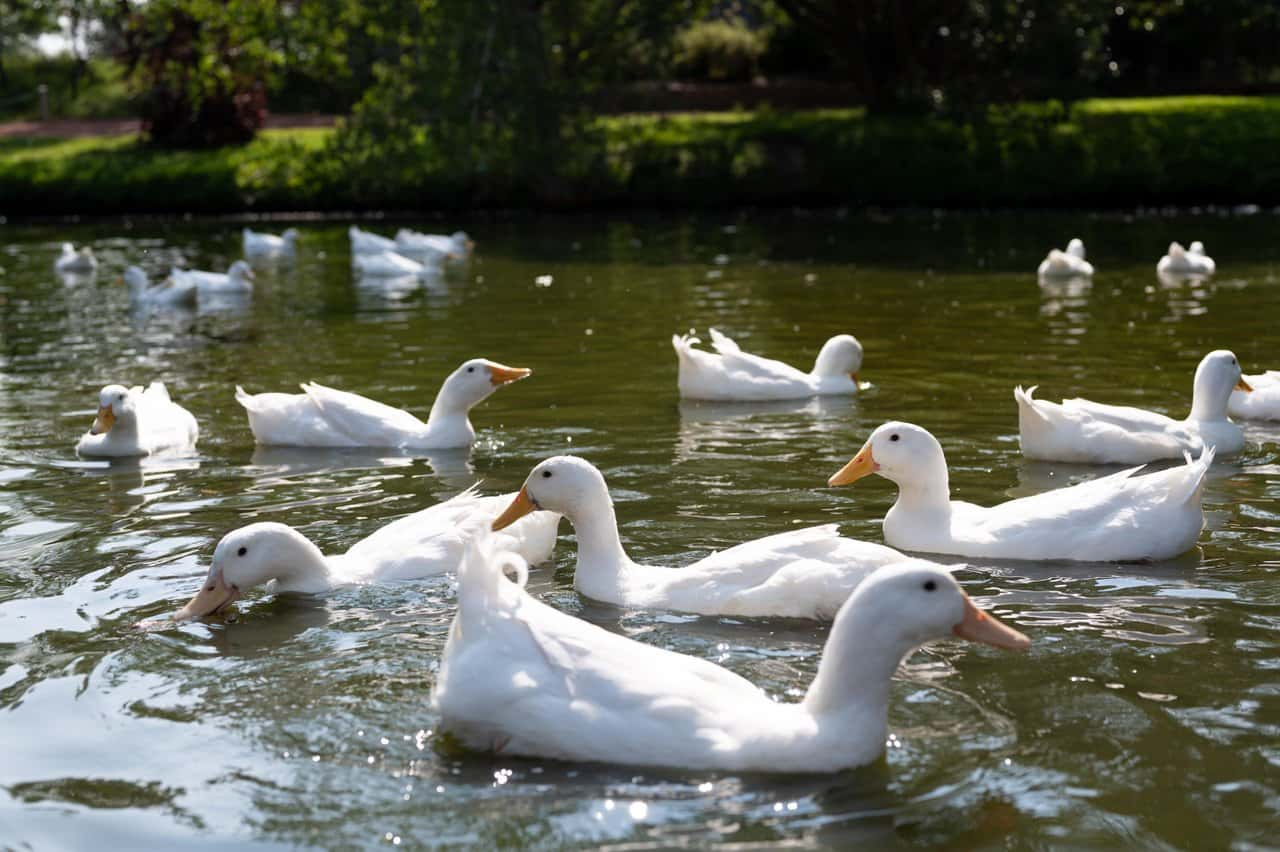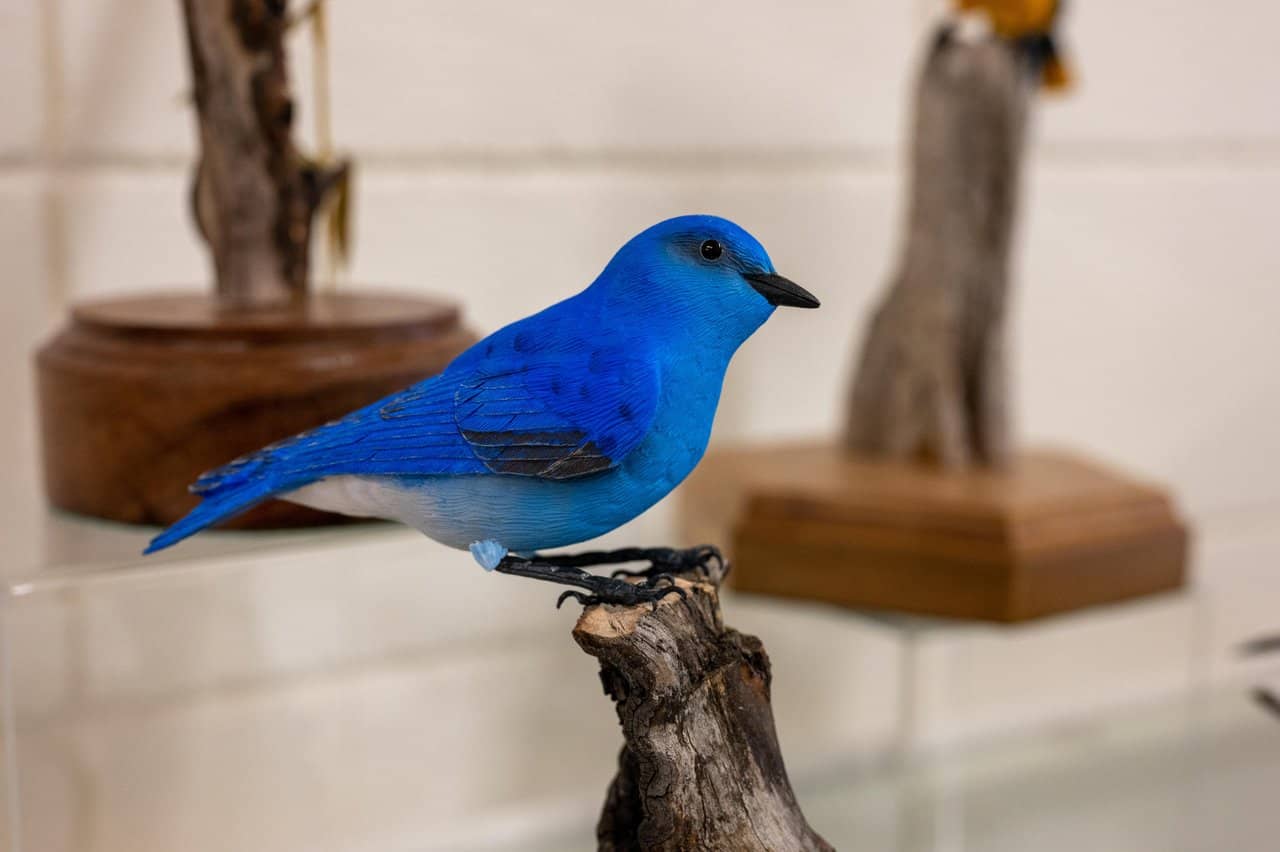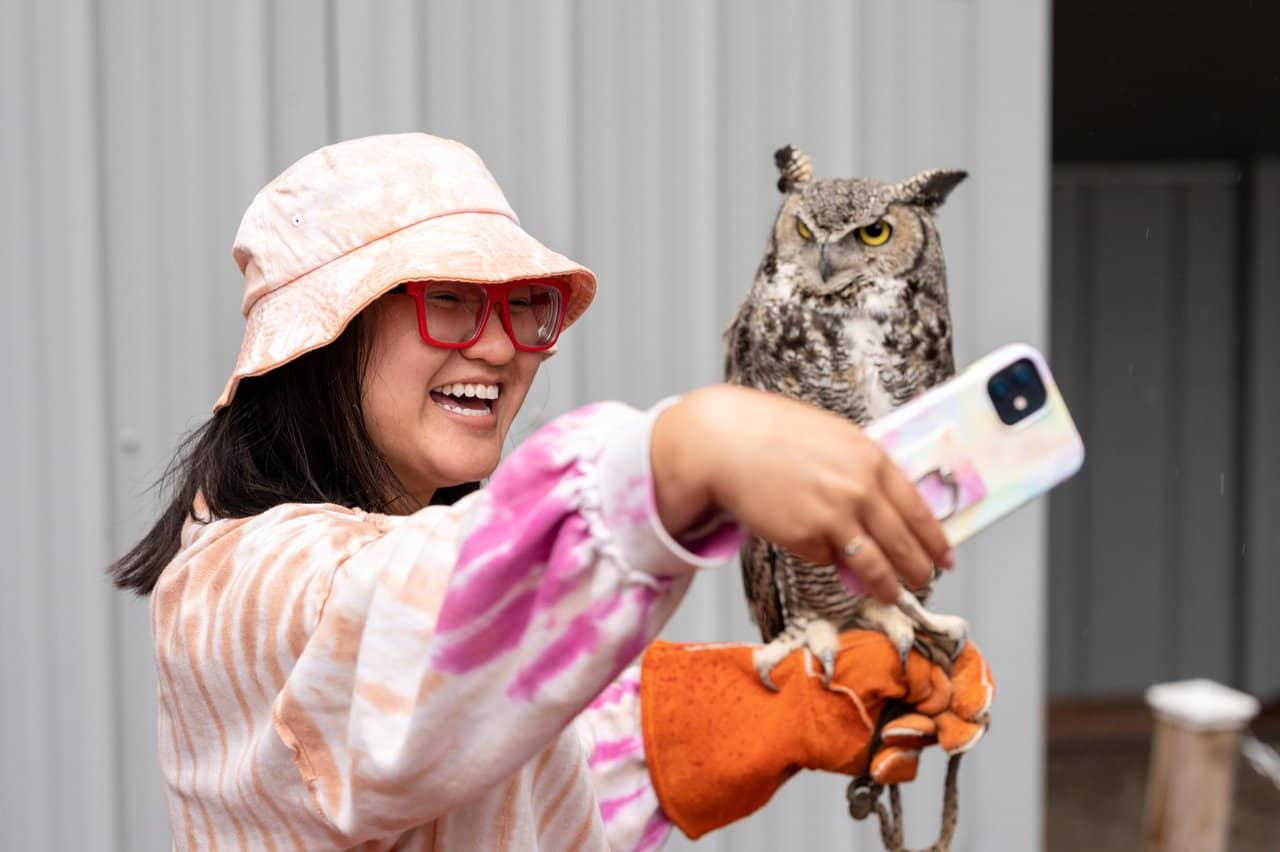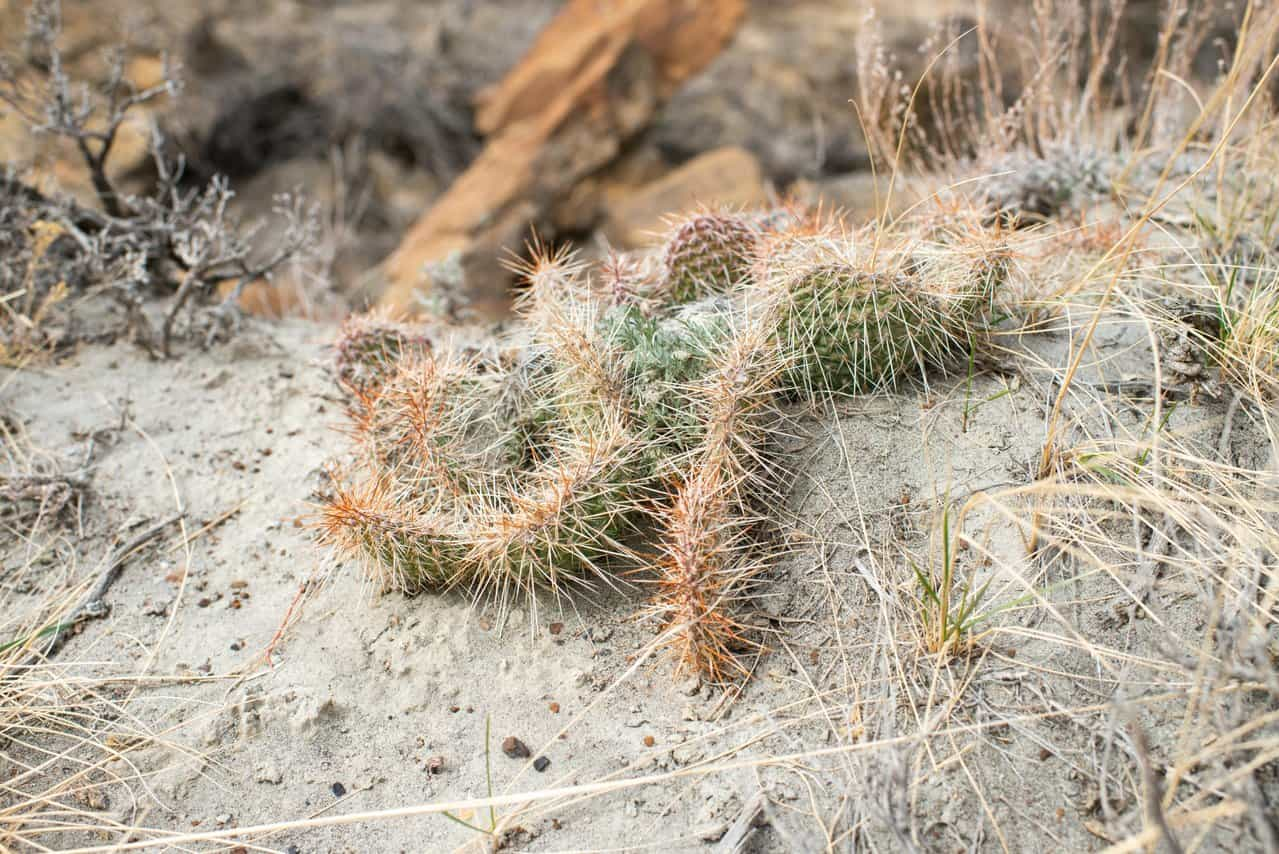
Plants and Birds of Lethbridge
Plants and Birds of Lethbridge
Lyndon Penner has been in an intense and all-consuming relationship with the natural world since he first arrived in the world 40 years ago. A writer, gardener, designer, and speaker, he has lectured at a great many colleges and universities and has also done extensive botanical guide work in Waterton Lakes National Park and Nikka Yuko Japanese Garden. His newest book, The Way of the Gardener, was released in 2021. Penner's thoughts on Lethbridge can be read below.
The best thing about living in Lethbridge is the great biodiversity found in our coulees and river valley. I've been exploring here for a number of years now, and I've been continually delighted by the birds, insects, flowers, and reptiles that call this sunny, windswept part of the country home. Cottonwood Park was an early favourite, full of grassland sparrows, porcupines, and even rattlesnakes! Six Mile Coulee, with its preponderance of prairie crocus and moss phlox in early spring, was another. Just a few blocks over from me, a wake of turkey vultures roosts every night, and they have sort of become "local celebrities"; well, to the birdwatchers, anyway. Walking beside the river in fall when the trees turn to gold or hearing the first horned lark at the end of winter, these are the experiences that have made Lethbridge memorable for me.
Lethbridge Birds
Lethbridge boasts a wide assortment of interesting, beautiful, and colourful birds. Some of them are happy to live in our parks, gardens, and backyards, while others prefer the native prairie grasses down in the coulees. Here are our top ten favourites!

Blue Jay
Jays are always mad about something! Noisy and very intelligent, blue jays are happy to come to bird feeders to grab peanuts and sometimes tree nuts as well. They have to be among our most beautiful birds; unmistakable and always a delight to see! They are common throughout the Lethbridge area.
Pine Siskin
Delightful little finches, pine siskins frequently show up at bird feeders and Lethbridge backyards. They have a very amusing and distinctive call that sounds like a child’s toy winding up!
Gold Finches
As they are primarily seed eaters, goldfinches are among the last of the songbirds to nest and are very common in Lethbridge gardens in mid to late summer. They are usually found in small groups, eagerly extracting seeds from purple coneflower (Echinacea), grasses, and thistles. The black and gold males are very distinctive. The females are pretty as well, but not quite so flashy.
Rufus Hummingbird
Feisty and fearless, rufous hummingbirds often appear in Lethbridge on both their spring and fall migrations. They are strongly attracted to gardens and streets where flowers are abundant, sometimes setting up shop and staying for a while in yards with particularly good feeding areas.
Downy Woodpecker
Little black and white sweethearts, downy woodpeckers are very busy patrolling trees and shrubs all over town. And because they are not songbirds, these woodpeckers often don’t get the love and appreciation they deserve. They do incredibly important work controlling the grubs and larvae of numerous pest insects and will greatly appreciate it if you put up a suet feeder for them, especially in winter.
Ring-Necked Pheasant
Not native to North America, ring-necked pheasants were brought here from Asia more than 100 years ago. They were intended to be hunted as game birds, but they didn’t do well everywhere. Lethbridge and Medicine Hat are two places where they succeeded! They can often be seen in Cottonwood Park and down around the Helen Schuler Nature Centre. The females are elegantly patterned in shades of white, brown, and black while the males have long bronzy tails with gleaming green heads and red-eye patches. They have a startling shriek, most often heard in the springtime.
Meadowlark
These beautiful birds are not larks at all but actually related to orioles. They return in early April and their song is loved by all who walk in the open and grassy places they like to call home.
Mountain Bluebird
These stunning songbirds are as blue as flax petals! They favour open pastures and prairies and are not found exclusively in the mountains. They return early in the year and many of the farms and acreages around Lethbridge will have nesting boxes for them along their fence lines.

Clay-Coloured Sparrow
Many people don’t realize the incredible abundance we have of native sparrows! Most are brown in colour and not dazzling to look at, but quite a few are good singers. The clay-coloured sparrow is common along roadsides, ditches, farmlands, and the coulees of Lethbridge. It has a distinctive, buzzy trill that sounds much like an insect. They are charming and lovely!
Great Horned Owl
Alberta's official bird, the great horned owl has the most diverse diet of any bird of prey in North America. Here in Lethbridge, they are even known to occasionally pick up take rattlesnakes! Mice, gophers, squirrels, smaller birds, and sometimes even house cats are all on the menu! Look for them in old, established cottonwoods down in the river valley.
Want to learn more about Alberta birds? Visit the Alberta Birds of Prey Centre in Coaldale, AB to get up close and personal with Alberta's birds!

Please keep in mind that domestic house cats are the number one cause of death for songbirds in North America. (We call them “house” cats for a reason!) Please do not allow your cat outdoors without proper supervision!
Native Plants of Lethbridge
There are a great many beautiful native plants to be found in the Lethbridge area and some of our favourites include the following:
Cactus
Many people are surprised to find that there are native cacti in Canada! Lethbridge boasts two species: the plains prickly pear (Opuntia polyacantha) and the pincushion cactus (Escobaria vivipara). Both are very beautiful! Prickly pears grow low to the ground and flower in early summer. They are usually bright lemon yellow but can also be gold, apricot, or rosy pink. They are a tremendously good source of pollen and nectar, and some of the native birds also use them as “predator-proof” nesting habitat! Pincushion cacti form little ball-shaped mounds and flower just briefly. The blooms can be magenta, rose, mauve, or fuchsia in colour. They are always quite gorgeous!

Showy Milkweed
Showy milkweed (Asclepias speciosa) is a common plant of roadsides, ditches, and other open spaces. It has large, grey-green felted leaves and ball-shaped clusters of soft pink flowers in early summer. These are loved by bees and butterflies! Milkweeds are also famous for being the host plant for our largest species of butterfly, the monarch.
Milkvetch
Milkvetch (Astragalus) should not be confused with milkweed; they are unrelated! These beautiful members of the bean family are common in Lethbridge, and we have a large number of different species as well. Regardless of what species you find, their foliage is a sight to behold. The two-grooved milkvetch has gorgeous purple to lavender-coloured flowers in early summer. Drummond’s milkvetch has ivory to cream-coloured blooms. You may even find the adorable little cushion milkvetch, aptly named and flowering very early in the year!
Penstemon
There are nearly 300 species of Penstemon in North America, many of which can be found right here in Lethbridge! The beautiful white penstemon (Penstemon albidus) is common but only flowers briefly. The yellow penstemon (Penstemon confertus) has tiny pale yellow flowers that are loved by bees and butterflies. Smooth blue penstemon (Penstemon nitidus) and small blue penstemon (Penstemon procerus) can all be found in our beautiful river valley system.

